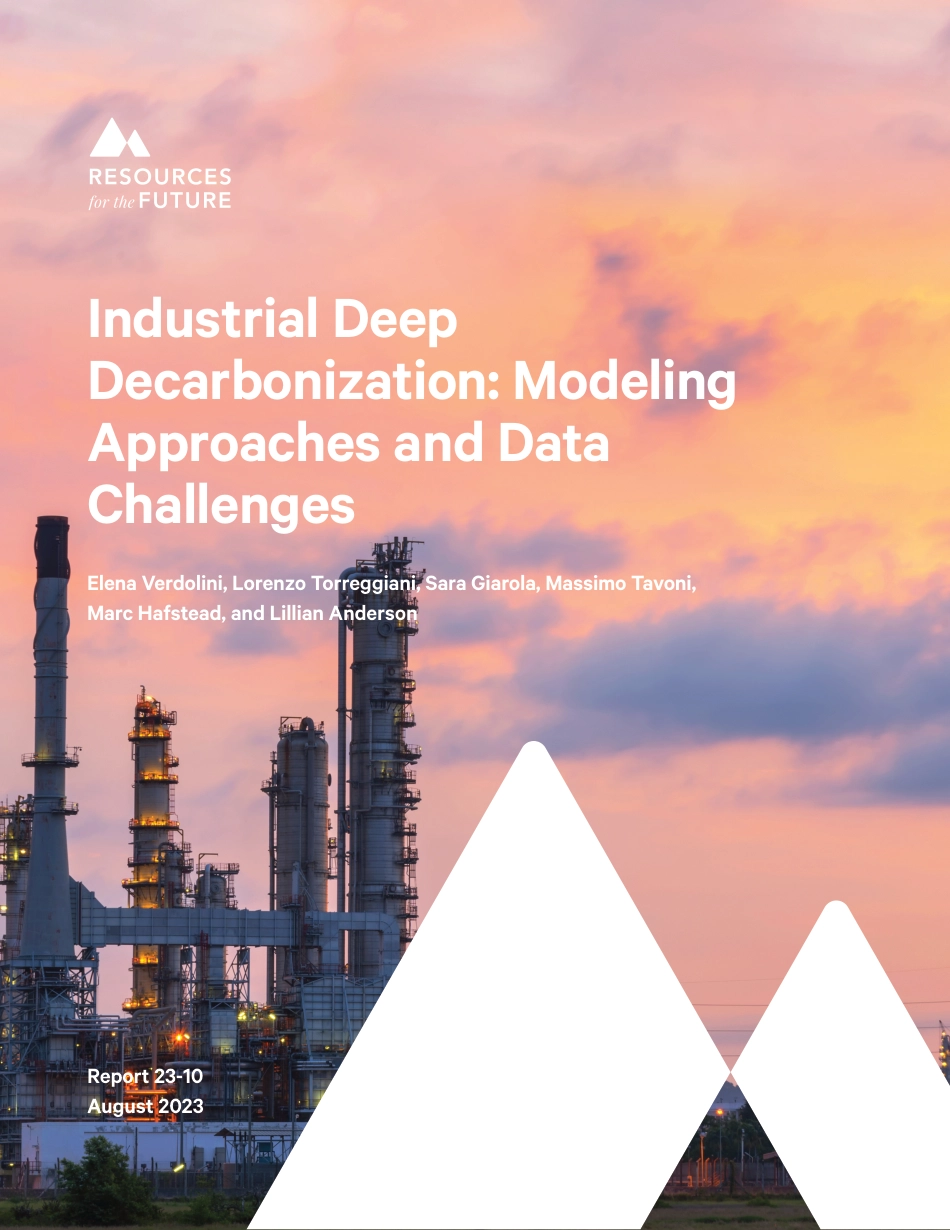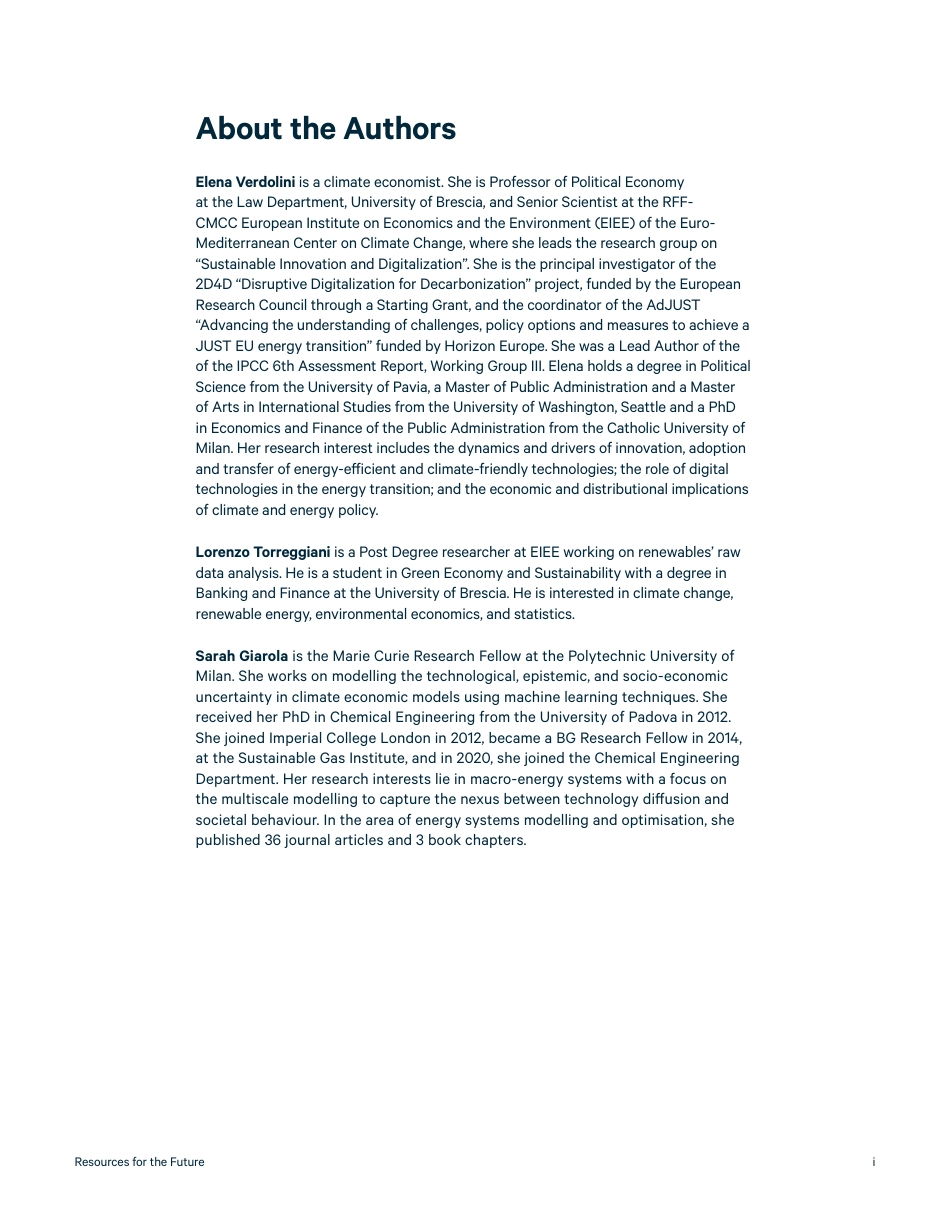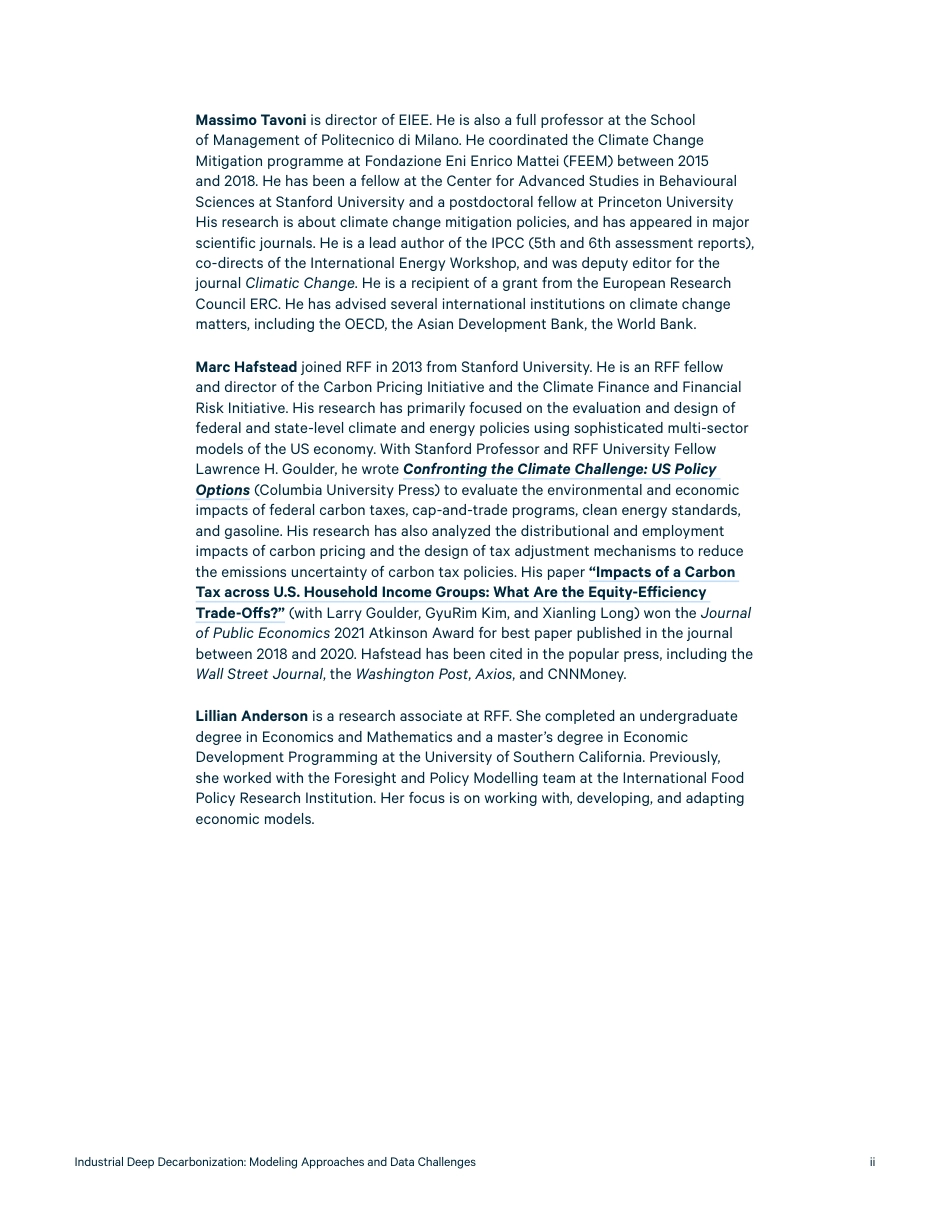Industrial Deep Decarbonization: Modeling Approaches and Data ChallengesAIndustrial Deep Decarbonization: Modeling Approaches and Data ChallengesElena Verdolini, Lorenzo Torreggiani, Sara Giarola, Massimo Tavoni, Marc Hafstead, and Lillian AndersonReport 23-10 August 2023Resources for the FutureiAbout the Authors Elena Verdolini is a climate economist. She is Professor of Political Economy at the Law Department, University of Brescia, and Senior Scientist at the RFF-CMCC European Institute on Economics and the Environment (EIEE) of the Euro-Mediterranean Center on Climate Change, where she leads the research group on “Sustainable Innovation and Digitalization”. She is the principal investigator of the 2D4D “Disruptive Digitalization for Decarbonization” project, funded by the European Research Council through a Starting Grant, and the coordinator of the AdJUST “Advancing the understanding of challenges, policy options and measures to achieve a JUST EU energy transition” funded by Horizon Europe. She was a Lead Author of the of the IPCC 6th Assessment Report, Working Group III. Elena holds a degree in Political Science from the University of Pavia, a Master of Public Administration and a Master of Arts in International Studies from the University of Washington, Seattle and a PhD in Economics and Finance of the Public Administration from the Catholic University of Milan. Her research interest includes the dynamics and drivers of innovation, adoption and transfer of energy-efficient and climate-friendly technologies; the role of digital technologies in the energy transition; and the economic and distributional implications of climate and energy policy.Lorenzo Torreggiani is a Post Degree researcher at EIEE working on ...



